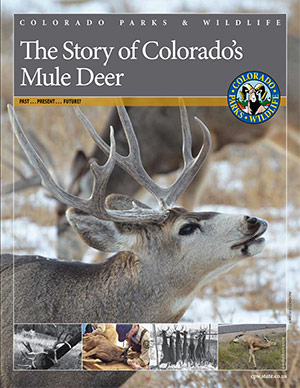
Mule deer are an icon of the American West, an economic resource and an indicator species for the health of important landscapes.
Mule deer evolved in North America, so they are well-adapted to western landscapes. Since the mid-19th Century, mule deer populations across the western U.S. have experienced dramatic swings, mainly in response to human activities, severe winters and drought. Wildlife managers across eleven western states have spent decades trying to understand and address swings in mule deer populations. A 2004 report, produced by Western Association of Fish and Wildlife Agencies' Mule Deer Working Group, concluded that habitat loss, declining habitat quality, weather, population management, predation, disease and interactions with elk all influence mule deer populations. Currently, wildlife managers in Colorado and many other states are continuing research and adapting management with the goals of reversing multi-year population declines.
The statewide, post-hunt 2012 deer population estimate of 408,000 is far below the current statewide population objective range of 525,000 - 575,000. On Colorado's West Slope, the post-hunt estimate of just over 300,000 deer was more than 100,000 deer shy of the desired target population range of 410,000 – 450,000 deer. Despite these challenges, Colorado has maintained its reputation as one of the premier states for mule deer hunting.
Colorado's Mule Deer Story is designed to frame a conversation between sportspeople, conservationists and the public with state wildlife managers. It provides a synopsis of the history of mule deer management in the state and seeks to define the broad set of issues that may be involved in the decline of deer herds in western Colorado. Colorado's Mule Deer Story is intended to provide a common understanding as the basis for a public process that helps determine how and where limited resources should be focused to increase Colorado mule deer populations and improve hunting opportunity.

